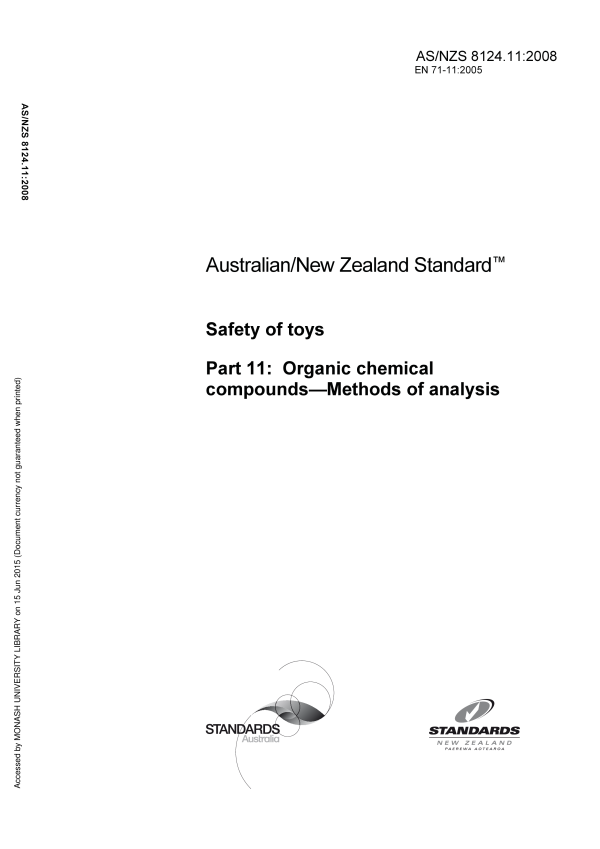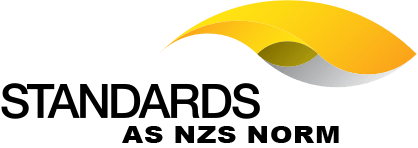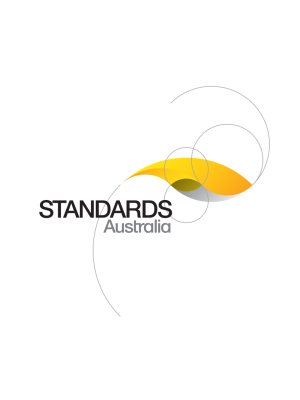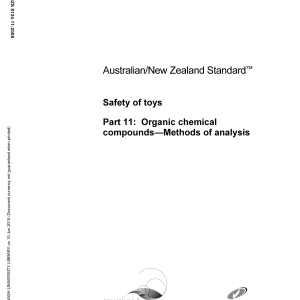🔍

Purchase the full subscription package now and enjoy a 40% discount, along with free updates for future editions.
AS/NZS 8124.11:2008
$242.18
Safety of toys, Part 11: Organic chemical compounds — Methods of analysis
Adopts EN 71-11:2005 to specify methods for the analysis of toy and toy material extracts prepared according to the sampling procedures.
Table of contents
Header
About this publication
PREFACE
1 Scope
2 Normative references
3 Terms and definitions
4 Environmental, health and safety precautions
5 Methods of analysis
5.1 General
5.2 Flame retardants
5.2.1 Principle
5.2.2 Standards, reagents and solvents
5.2.2.1 Standards
5.2.2.1.1 Pentabromodiphenyl ether2∗, CAS No. 32534-81-9
5.2.2.1.2 Octabromodiphenyl ether3∗, CAS No. 32536-52-0
5.2.2.1.3 Tri-o-cresyl phosphate, CAS No. 78-30-8
5.2.2.1.4 Tris(2-chloroethyl) phosphate, CAS No. 115-96-8
5.2.2.2 Reagents and solvents
5.2.2.2.1 Acetonitrile
5.2.2.2.2 Dichloromethane
5.2.2.2.3 Ammonium acetate, anhydrous
5.2.2.2.4 Acetic acid, glacial
5.2.2.2.5 Ammonium acetate, 10 mmol/l aqueous solution, pH 3,6
5.2.2.3 Stock standard solution (100 mg/l)
5.2.3 Apparatus
5.2.4 Procedure
5.2.4.1 Calibration solutions
5.2.4.2 Determination
5.2.4.3 Identification
5.2.5 Calculation of analyte concentration
5.2.6 Limits and precision
5.2.7 Test report
5.3 Colourants
5.3.1 Principle
5.3.2 Standards, reagents and solvents
5.3.2.1 Standards5
5.3.2.1.1 Disperse Blue 1, C.I. 64500
5.3.2.1.2 Disperse Blue 3, C.I. 61505
5.3.2.1.3 Disperse Blue 106
5.3.2.1.4 Disperse Blue 124
5.3.2.1.5 Disperse Yellow 3, C.I. 11855
5.3.2.1.6 Disperse Orange 3, C.I. 11005
5.3.2.1.7 Disperse Orange 37
5.3.2.1.8 Disperse Red 1, C.I. 11110
5.3.2.1.9 Solvent Yellow 1, C.I. 11000
5.3.2.1.10 Solvent Yellow 2, C.I. 11020
5.3.2.1.11 Solvent Yellow 3, C.I. 11160
5.3.2.1.12 Basic Red 9, C.I. 42500
5.3.2.1.13 Basic Violet 1, C.I. 42535
5.3.2.1.14 Basic Violet 3, C.I.42555
5.3.2.1.15 Acid Red 26, C.I.16150
5.3.2.1.16 Acid Violet 49, C.I. 42640
5.3.2.2 Reagents and solvents
5.3.2.2.1 Tetrabutylammonium hydroxide solution, 40 % in water
5.3.2.2.2 Citric acid
5.3.2.2.3 Ammonium acetate, anhydrous
5.3.2.2.4 Acetonitrile
5.3.2.2.5 Tetrahydrofuran
5.3.2.2.6 Ethanol, absolute
5.3.2.2.7 Ammonium hydroxide, approx. 35 % (V/V)
5.3.2.2.8 Acetic acid, glacial
5.3.2.2.9 Ammonium acetate, 10 mmol/l aqueous solution, pH 3,6
5.3.2.2.10 Citrate-buffered tetrabutylammonium hydroxide solution
5.3.3 Standard solutions
5.3.3.1 General
5.3.3.2 Stock standard solution (50 µg/ml), mix 1
5.3.3.3 Stock standard solution (50 µg/ml), mix 2
5.3.4 Apparatus
5.3.4.1 PTFE membrane filter
5.3.4.2 Ultrasonic bath
5.3.4.3 Liquid chromatograph with diode-array detector
5.3.5 Procedure
5.3.5.1 Calibration solutions
5.3.5.2 Determination
5.3.5.3 Identification
5.3.6 Calculation of analyte concentration
5.3.7 Limits and precision
5.3.8 Additional information
5.3.8.1 LC-DAD spectral library
5.3.9 Test report
5.4 Primary aromatic amines
5.4.1 Principle
5.4.2 Standards, reagents and solvents
5.4.2.1 Standards
5.4.2.1.1 Benzidine
5.4.2.1.2 Aniline
5.4.2.1.3 2-Naphthylamine
5.4.2.1.4 3,3’-Dichlorobenzidine
5.4.2.1.5 3,3’-Dimethoxybenzidine
5.4.2.1.6 3,3’-Dimethylbenzidine
5.4.2.1.7 2-Methoxyaniline
5.4.2.1.8 o-Toluidine
5.4.2.1.9 4-Chloroaniline
5.4.2.2 Reagents and solvents
5.4.2.2.1 Acetonitrile
5.4.2.2.2 tert-Butyl methyl ether
5.4.2.2.3 n-Hexane
5.4.2.2.4 Chromabond XTR (Porous granulated kieselguhr)7
5.4.2.3 Stock standard solution (100 mg/l)
5.4.3 Apparatus
5.4.3.1 Ultrasonic bath
5.4.3.2 Vortex® shaker
5.4.3.3 Centrifuge
5.4.3.4 Gas chromatograph with mass spectrometer detector
5.4.4 Procedure
5.4.4.1 Calibration solutions
5.4.4.2 Determination
5.4.5 Calculation of analyte concentration
5.4.6 Limits and precision
5.4.7 Additional information
5.4.8 Test report
5.5 Monomers and solvents
5.5.1 Method for acrylamide
5.5.1.1 Principle
5.5.1.2 Standards
5.5.1.2.1 Acrylamide
5.5.1.2.2 Acrylamide stock standard solution, 1 000 mg/l, in water
5.5.1.3 Apparatus
5.5.1.4 Procedure
5.5.1.4.1 Calibration solutions
5.5.1.4.2 Determination
5.5.1.5 Calculation of analyte concentration
5.5.1.6 Limit and precision
5.5.1.7 Test report
5.5.2 Method for phenol and bisphenol A
5.5.2.1 Principle
5.5.2.2 Standards, reagents and solvents
5.5.2.2.1 Standards
5.5.2.2.1.1 Phenol
5.5.2.2.1.2 Bisphenol A
5.5.2.2.2 Solvents
5.5.2.2.3 Standard solutions
5.5.2.2.3.1 Phenol stock standard solution (1 000 mg/l)
5.5.2.2.3.2 Bisphenol A stock standard solution (1 000 mg/l)
5.5.2.3 Apparatus
5.5.2.4 Procedure
5.5.2.4.1 Calibration solutions
5.5.2.4.1.1 Phenol
5.5.2.4.1.2 Bisphenol A
5.5.2.4.2 Determination
5.5.2.5 Calculation of analyte concentration
5.5.2.6 Limits and precision
5.5.2.7 Test report
5.5.3 Method for formaldehyde
5.5.3.1 Principle
5.5.3.2 Standards, reagents and solvents
5.5.3.2.1 Ammonium acetate, anhydrous
5.5.3.2.2 Acetic acid, glacial (d = 1,05)
5.5.3.2.3 Pentane-2,4-dione
5.5.3.2.4 Hydrochloric acid, 1 mol/l
5.5.3.2.5 Sodium hydroxide solution, 1 mol/l
5.5.3.2.6 Starch solution freshly prepared, 2 g/l
5.5.3.2.7 Formaldehyde solution, 370 g/l to 400 g/l
5.5.3.2.8 Standard iodine solution, 0,05 mol/l
5.5.3.2.9 Standard sodium thiosulphate solution, 0,1 mol/l
5.5.3.2.10 Pentane-2,4-dione reagent
5.5.3.2.11 Reagent without pentane-2,4-dione
5.5.3.3 Standard solutions
5.5.3.3.1 Standardised formaldehyde stock solution
5.5.3.3.2 Formaldehyde dilute standard solution
5.5.3.4 Apparatus
5.5.3.4.1 Spectrometer
5.5.3.4.2 Scanning ultraviolet (UV) spectrometer
5.5.3.4.3 Thermostatic water-bath
5.5.3.5 Procedure
5.5.3.5.1 General
5.5.3.5.2 Calibration solutions
5.5.3.5.3 Sample solution
5.5.3.5.4 Reference solution
5.5.3.5.5 Blank solution
5.5.3.5.6 Determination
5.5.3.6 Calculation of analyte concentration
5.5.3.7 Confirmation
5.5.3.7.1 Requirement for confirmation
5.5.3.7.2 Standard spectrum
5.5.3.7.3 Sample spectrum
5.5.3.8 Validation and limit
5.5.3.9 Test report
5.5.4 Method for trichloroethylene and dichloromethane
5.5.4.1 Principle
5.5.4.2 Standards, reagents and solvents
5.5.4.2.1 Standards
5.5.4.2.1.1 Trichloroethylene
5.5.4.2.1.2 Dichloromethane
5.5.4.2.2 Reagents and solvents
5.5.4.2.2.1 Acetone
5.5.4.2.2.2 Sodium chloride
5.5.4.2.3 Standard solution
5.5.4.3 Apparatus
5.5.4.3.1 Headspace sampler
5.5.4.3.2 Gas chromatograph with electron capture detector
5.5.4.4 Procedure
5.5.4.4.1 Calibration solutions
5.5.4.4.2 Determination
5.5.4.5 Calculation of analyte concentration
5.5.4.6 Limits and precision
5.5.4.7 Test report
5.5.5 Method for methanol, toluene, ethyl benzene, xylene and cyclohexanone
5.5.5.1 Principle
5.5.5.2 Standards, reagents and solvents
5.5.5.2.1 Standards
5.5.5.2.1.1 Methanol
5.5.5.2.1.2 Toluene
5.5.5.2.1.3 Ethylbenzene
5.5.5.2.1.4 Xylenes (all isomers)
5.5.5.2.1.5 Cyclohexanone
5.5.5.2.2 Reagents and solvents
5.5.5.2.2.1 Sodium chloride
5.5.5.2.2.2 Acetone
5.5.5.2.3 Stock standard solutions
5.5.5.3 Apparatus
5.5.5.3.1 Headspace sampler
5.5.5.3.2 Gas chromatograph with mass spectrometer detector
5.5.5.4 Procedure
5.5.5.4.1 Calibration solutions
5.5.5.4.1.1 Group 1: Toluene, ethylbenzene, o-xylene, m-xylene, p-xylene and cyclohexanone
5.5.5.4.1.2 Group 2: Methanol
5.5.5.4.2 Determination
5.5.5.5 Calculation of analyte concentration
5.5.5.6 Limits and precision
5.5.5.7 Test report
5.5.6 Method for 2-methoxyethyl acetate, 2-ethoxyethanol, 2-ethoxyethyl acetate, bis(2-methoxyethyl) ether, 2-methoxypropyl acetate, styrene, 3,5,5-trimethyl-2-cyclohexene-1-one and nitrobenzene
5.5.6.1 Principle
5.5.6.2 Standards, reagents and solvents
5.5.6.2.1 Standards
5.5.6.2.1.1 2-Methoxyethyl acetate
5.5.6.2.1.2 2-Ethoxyethanol
5.5.6.2.1.3 2-Ethoxyethyl acetate
5.5.6.2.1.4 Bis(2-methoxyethyl) ether
5.5.6.2.1.5 2-Methoxypropyl acetate
5.5.6.2.1.6 Styrene
5.5.6.2.1.7 3,5,5-Trimethyl-2-cyclohexene-1-one (isophorone)
5.5.6.2.1.8 Nitrobenzene
5.5.6.2.2 Reagents and solvents
5.5.6.2.2.1 Acetone
5.5.6.2.2.2 Ethyl acetate
5.5.6.2.2.3 Sodium sulfate
5.5.6.2.3 Stock standard solution
5.5.6.3 Apparatus
5.5.6.3.1 Solid-phase extraction tubes
5.5.6.3.2 Gas chromatography with mass spectrometry detector
5.5.6.4 Procedure
5.5.6.4.1 Calibration solutions
5.5.6.4.2 Solid-phase extraction
5.5.6.4.3 Determination
5.5.6.5 Calculation of analyte concentration
5.5.6.6 Limits and precision
5.5.6.7 Test report
5.6 Wood preservatives
5.6.1 Principle
5.6.2 Standards, reagents and solvents
5.6.2.1 Standards
5.6.2.1.1 2,4-Dichlorophenol∗ (2,4-DCP)
5.6.2.1.2 2,3,4-Trichlorophenol (2,3,4-TCP), internal standard
5.6.2.1.3 2,4,6-Trichlorophenol∗ (2,4,6-TCP)
5.6.2.1.4 2,4,5-Trichlorophenol∗ (2,4,5-TCP)
5.6.2.1.5 2,3,4,6-Tetrachlorophenol∗ (2,3,4,6-TeCP)
5.6.2.1.6 Pentachlorophenol (PCP)
5.6.2.1.7 Lindane
5.6.2.1.8 Cyfluthrin, mixture of isomers
5.6.2.1.9 Cypermethrin, mixture of isomers
5.6.2.1.10 Deltamethrin
5.6.2.1.11 Permethrin, mixture of cis- and trans-isomer (1:3)
5.6.2.2 Reagents and solvents
5.6.2.2.1 Potassium carbonate
5.6.2.2.2 ortho-Phosphoric acid
5.6.2.2.3 n-Hexane
5.6.2.2.4 Acetic anhydride
5.6.2.2.5 Ethanol
5.6.2.2.6 Acetic acid, glacial
5.6.2.2.7 Ethanol/acetic acid solution (90: 10, V/V)
5.6.2.2.8 Potassium carbonate solution (0,1 M)
5.6.3 Standard solutions
5.6.3.1 Concentrated stock standard 1
5.6.3.2 Concentrated stock standard 2
5.6.3.3 Concentrated stock standard 3
5.6.3.4 Concentrated stock internal standard
5.6.3.5 Diluted stock standard solution
5.6.3.6 Diluted internal standard solution
5.6.4 Apparatus
5.6.4.1 Ultrasonic bath
5.6.4.2 Calibrated pipettes
5.6.4.3 Vortex® shaker
5.6.4.4 Gas chromatograph with electron capture detector (ECD)
5.6.5 Procedure
5.6.5.1 Calibration solutions
5.6.5.2 Derivatization
5.6.5.3 Determination
5.6.6 Calculation of analyte concentration
5.6.7 Limits and precision
5.6.8 Test report
5.7 Preservatives
5.7.1 Principle
5.7.2 Standards, reagents and solvents
5.7.2.1 Standards
5.7.2.1.1 1,2-Benzylisothiazolin-3-one
5.7.2.1.2 2-Methyl-4-isothiazolin-3-one
5.7.2.1.3 5-Chloro-2-methyl-4-isothiazolin-3-one (≈1,2 %) / 2-methyl-4-isothiazolin-3-one (≈ 0,3 %)
5.7.2.2 Solvents and reagents
5.7.2.2.1 Acetic acid, glacial
5.7.2.2.2 Methanol
5.7.2.2.3 Acetic acid, 0,4 % (V/V) aqueous solution.
5.7.3 Standard solutions
5.7.3.1 1,2-Benzylisothiazolin-3-one stock standard solution (50 mg/l)
5.7.3.2 2-Methyl-4-isothiazolin-3-one stock standard solution (100 mg/l)
5.7.3.3 5-Chloro-2-methyl-4-isothiazolin-3-one stock standard solution (120 mg/l)
5.7.4 Apparatus
5.7.4.1 Ultrasonic bath
5.7.4.2 Calibrated pipettes
5.7.4.3 Vortex® shaker
5.7.4.4 Centrifuge
5.7.4.5 Liquid chromatograph with UV detector
5.7.5 Procedure
5.7.5.1 Calibration solutions
5.7.5.1.1 1,2-Benzylisothiazolin-3-one calibration solutions
5.7.5.1.2 2-Methyl-4-isothiazolin-3-one calibration solutions
5.7.5.1.3 5-Chloro-2-methyl-4-isothiazolin-3-one calibration solutions
5.7.5.2 Determination
5.7.6 Calculation of analyte concentration
5.7.7 Limits and precision
5.7.8 Test report
5.8 Plasticisers
5.8.1 Principle
5.8.2 Standards, reagents and solvents
5.8.2.1 Standards
5.8.2.1.1 Triphenyl phosphate, CAS No. 115-86-6
5.8.2.1.2 Tri-o-cresyl phosphate (tri-o-tolyl phosphate), CAS No. 78-30-8
5.8.2.1.3 Tri-m-cresyl phosphate (tri-m-tolyl phosphate), CAS No. 563-04-2
5.8.2.1.4 Tri-p-cresyl phosphate (tri-p-tolyl phosphate), CAS No. 78-32-0
5.8.2.1.5 Benzyl butyl phthalate (internal standard), CAS No. 85-68-7
5.8.2.2 Reagents and solvents
5.8.2.2.1 Acetone
5.8.2.2.2 Toluene
5.8.2.2.3 Ethyl acetate
5.8.2.2.4 Solvent mixture: mixture containing 95 % toluene and 5 % ethyl acetate, by volume
5.8.3 Standard solutions
5.8.3.1 Stock standard solution (120 mg/l)
5.8.3.2 Stock internal standard solution, 10 mg/ml, benzyl butyl phthalate in acetone
5.8.3.3 Dilute internal standard solution, 1 mg/ml, benzyl butyl phthalate in acetone
5.8.4 Apparatus
5.8.4.1 Gas chromatograph with mass spectrometer detector
5.8.4.2 Quantification ions
5.8.5 Procedure
5.8.5.1 General
5.8.5.2 Calibration solutions
5.8.5.3 Determination
5.8.6 Calculation of analyte concentration
5.8.7 Limits and precision
5.8.8 Test report
Annex A
A.1 Introduction
A.1.1 General
A.1.2 Tiered testing approach
A.2 Static headspace – GC/MS – method
A.2.1 Principle
A.2.2 Reagents
A.2.3 Standard solutions
A.2.3.1 General
A.2.3.2 Stock standard solutions (approximately 2 mg/ml)
A.2.3.3 Stock internal standard solution (approximately 2 mg/ml)
A.2.3.4 Calibration solutions I (approximately 0,2 mg/ml)
A.2.3.5 Calibration solutions II (approximately 0,02 mg/ml)
A.2.3.6 Dilute internal standard solution (approximately 0,02 mg/ml)
A.2.4 Apparatus
A.2.4.1 Gas chromatograph with mass spectrometer detector and headspace sampler
A.2.4.2 Analytical conditions for headspace – GC – MS
A.2.5 Procedure
A.2.5.1 Sample preparation
A.2.5.2 Calibration standards
A.2.5.3 Determination
A.2.6 Calculation of analyte concentration
A.2.7 Validation, precision and limits
A.2.7.1 Limit of detection, limit of quantification and emission limit
A.2.7.2 Repeatability/reproducibility
A.2.7.3 Linearity
A.3 Thermal desorption – GC/MS – method
A.3.1 Principle
A.3.2 Reagents
A.3.2.1 Sorbent material
A.3.2.2 Analytes and solvents
A.3.3 Standard solutions
A.3.4 Apparatus
A.3.4.1 Gas chromatograph with mass spectrometer detector
A.3.4.2 Equipment for thermal desorption – GC/MS
A.3.4.2.1 Thermal extraction device
A.3.4.2.2 Sorbent tube
A.3.4.2.3 Tube calibration device
A.3.4.2.4 Tube conditioning device
A.3.4.2.5 Thermal desorption device
A.3.4.3 Flow-meter calibrator
A.3.4.4 Analytical conditions for thermal desorption: Analytical conditions
A.3.5 Procedure
A.3.5.1 Preparation of sorbent tubes
A.3.5.1.1 General
A.3.5.1.2 Preconditioning of sorbent tubes
A.3.5.1.3 Storage of conditioned sorbent tubes
A.3.5.1.4 Reconditioning the preconditioned sorbent tubes
A.3.5.2 Sample preparation and desorption
A.3.5.3 Calibration standards
A.3.5.4 Detection and quantification
A.3.6 Calculation of analyte concentration
A.3.6.1 Calculation in µg/g
A.3.6.2 Calculation in µg/m3
A.3.7 Validation, precision and limits
A.3.7.1 Limit of detection, limit of quantification and emission limit
A.3.7.2 Repeatability and reproducibility
A.3.7.3 Linearity
Annex B
Annex C
C.1 LC-MS instrumental conditions for conformational analysis
C.2 LC-MS and LC-MS-MS conformational analysis
Annex ZA
Bibliography
Cited references in this standard
Content history
DR 07378
AS/NZS 8124.11-2008 REC:2018
EN 71-11:2005
Please select a variation to view its description.
| Published | 28/04/2008 |
|---|---|
| Pages | 65 |
Please select a variation to view its pdf.


